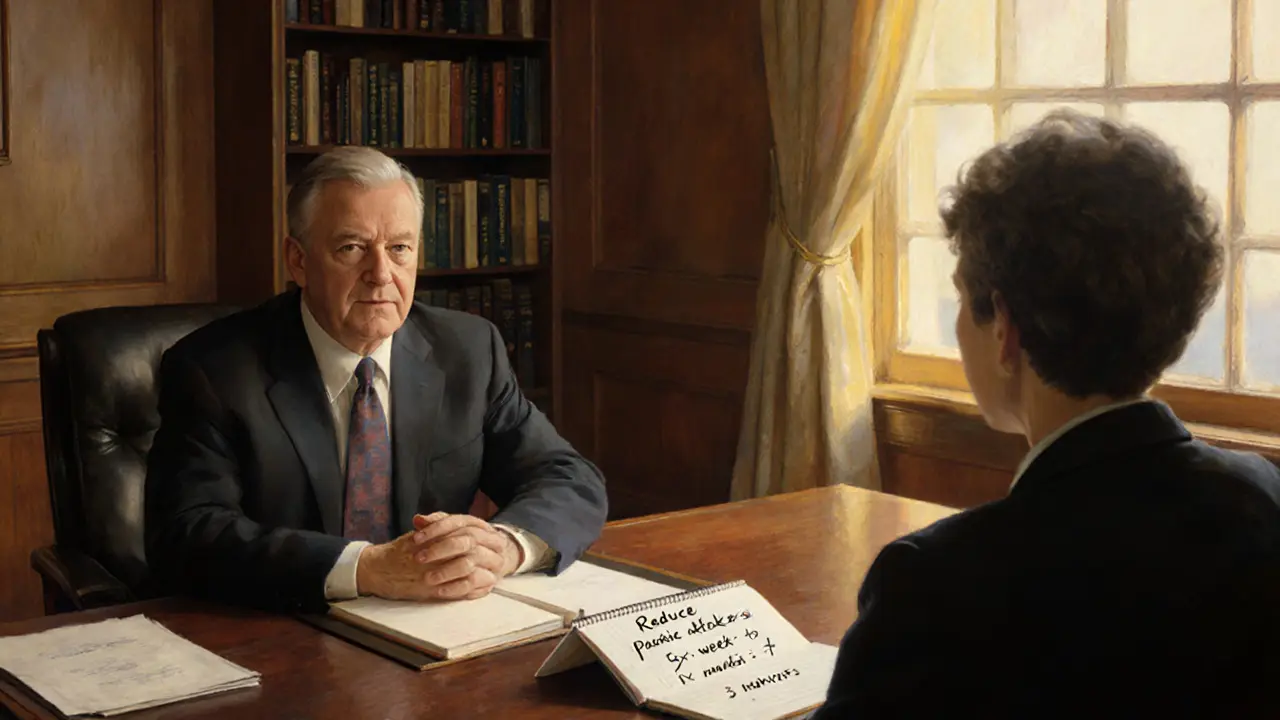Cíle terapie: Co chcete dosáhnout a jak to vlastně funguje
When you start therapy, you might say you want to stop feeling anxious, to sleep better, or to stop arguing with your partner. But the real cíle terapie, konkrétní, měřitelné a osobní cíle, které vás vedou skrze terapeutický proces. Also known as terapeutické cíle, it is not about fixing what’s broken—it’s about understanding what’s been neglected. Most people don’t realize therapy isn’t a quick fix. It’s a journey where your goals shift as you uncover deeper layers of yourself.
One common goal is osobní růst, schopnost lépe rozumět svým emocím, reakcím a vzorům chování, které vás omezovaly. This isn’t vague self-help talk. It’s what happens when someone learns to recognize their own triggers after a panic attack, or when they stop blaming themselves for a relationship breakdown. Another key concept is terapeutická aliance, důvěra a spojení mezi vámi a terapeutem, které umožňuje bezpečně prozkoumat bolestná témata. Without this, even the best techniques won’t stick. And terapeutický proces, postupné zjišťování, jak vaše minulost ovlivňuje vaše dnes. This is why the second or third session often feels worse—not because therapy isn’t working, but because you’re finally touching what’s been buried.
Co skutečně můžete dosáhnout?
You don’t need to have a perfect plan. Many people come in saying, "I just need to feel better." That’s enough to start. Over time, goals become clearer: maybe you want to stop avoiding social situations, or finally say no without guilt, or stop using food to calm your mind. These aren’t just behaviors—they’re survival strategies your mind learned when you were younger. Therapy helps you replace them with something more sustainable. Research shows that people who set specific, personal goals in therapy—like "I want to be able to talk to my boss without shaking"—progress faster than those who just want "to be happy."
Some goals are emotional: learning to sit with sadness instead of running from it. Others are practical: creating a daily routine that doesn’t overwhelm your ADHD brain, or learning how to ask for help without feeling weak. And then there are goals tied to trauma—like finally feeling safe in your own body after years of hypervigilance. None of these happen overnight. But they happen when you show up, even when it hurts.
In the posts below, you’ll find real stories from people who’ve walked this path. You’ll see how mentalization helps rebuild relationships after borderline personality disorder, how mindfulness changes the way your brain reacts to stress, and why organizing your day with simple tools can be life-changing if you have ADHD. You’ll read about what really happens in the second session, why online therapy works for some and not others, and how therapists combine methods safely to fit your needs. These aren’t abstract theories—they’re tools people used to finally feel like themselves again. And if you’re wondering whether therapy can help you, the answer isn’t in a brochure. It’s in what you’re willing to explore next.
6
lisJak poznat dobrý terapeutický přístup: Co hledat u terapeuta a proč práce s cíli je klíčová
Zjistěte, jak poznat kvalitní terapeutický přístup: co je akreditovaný výcvik, jak pracovat s cíli a proč vědecky ověřené metody dělají rozdíl. Všechno, co potřebujete vědět, než začnete s psychoterapií.
ČÍST VÍCE